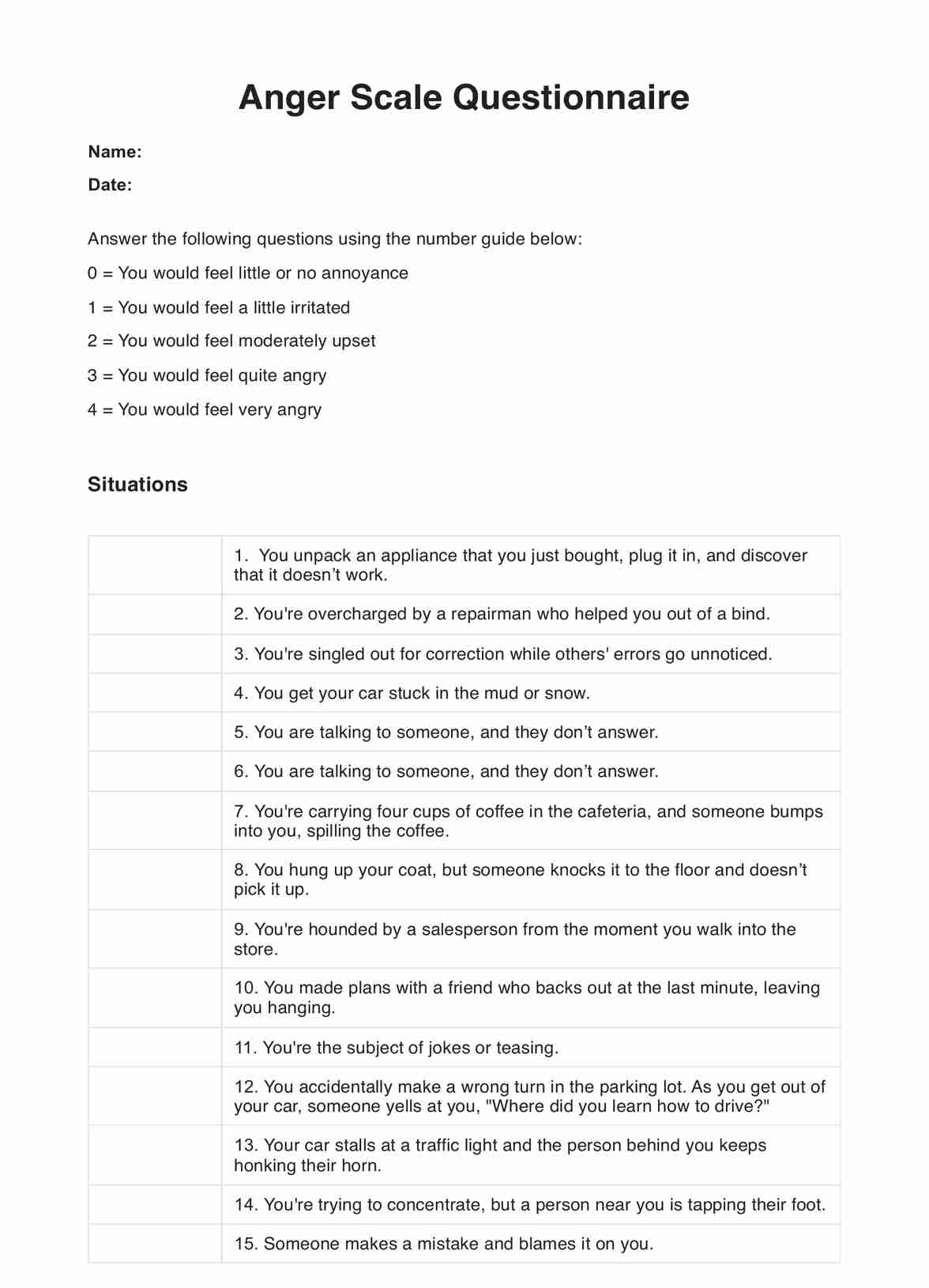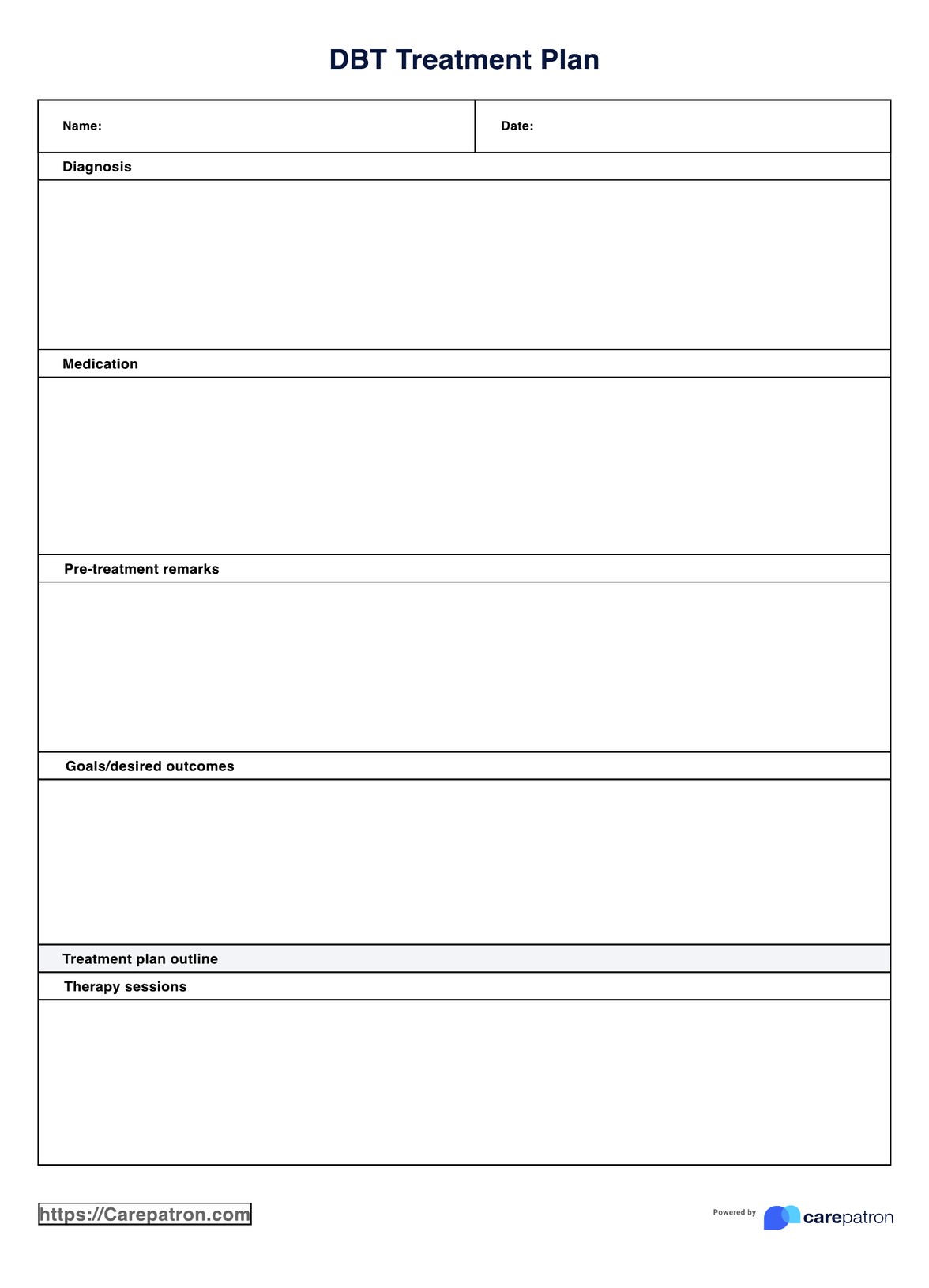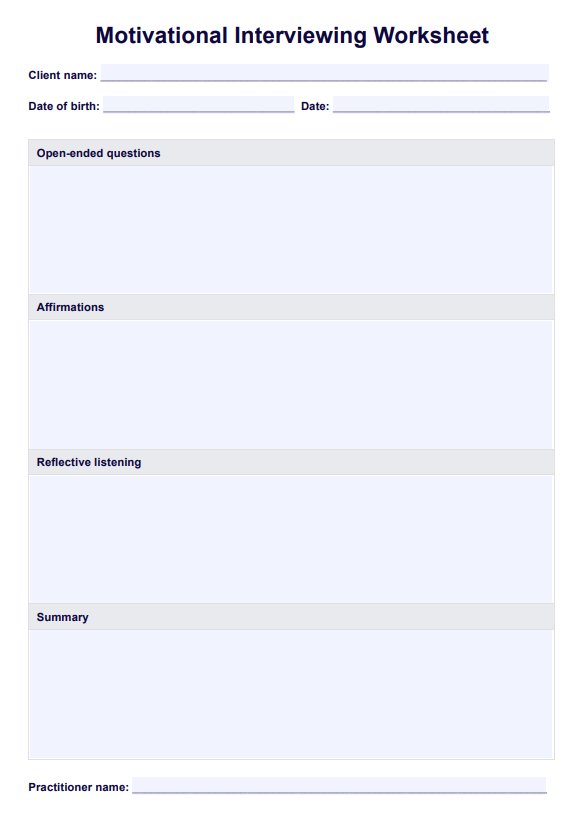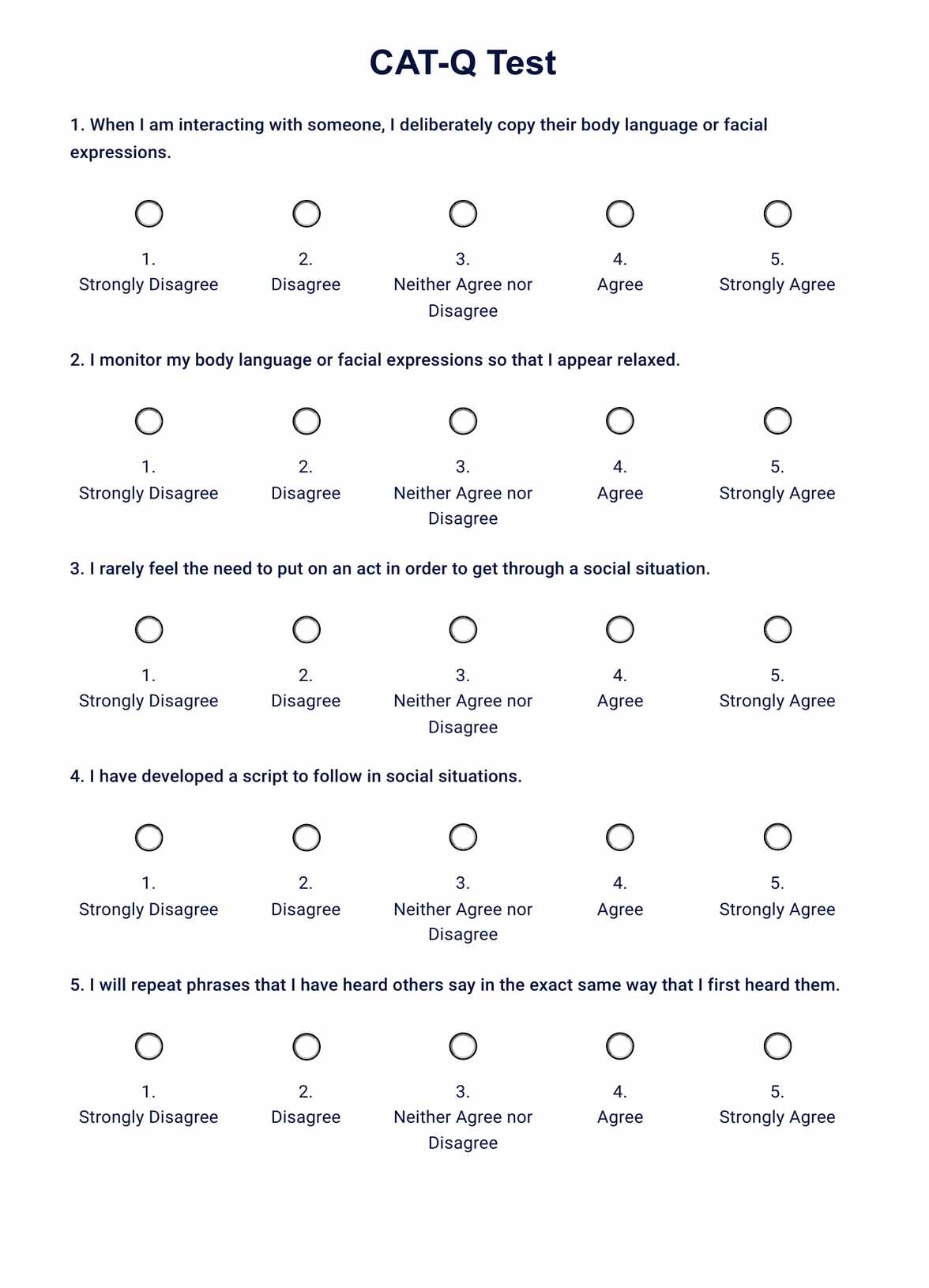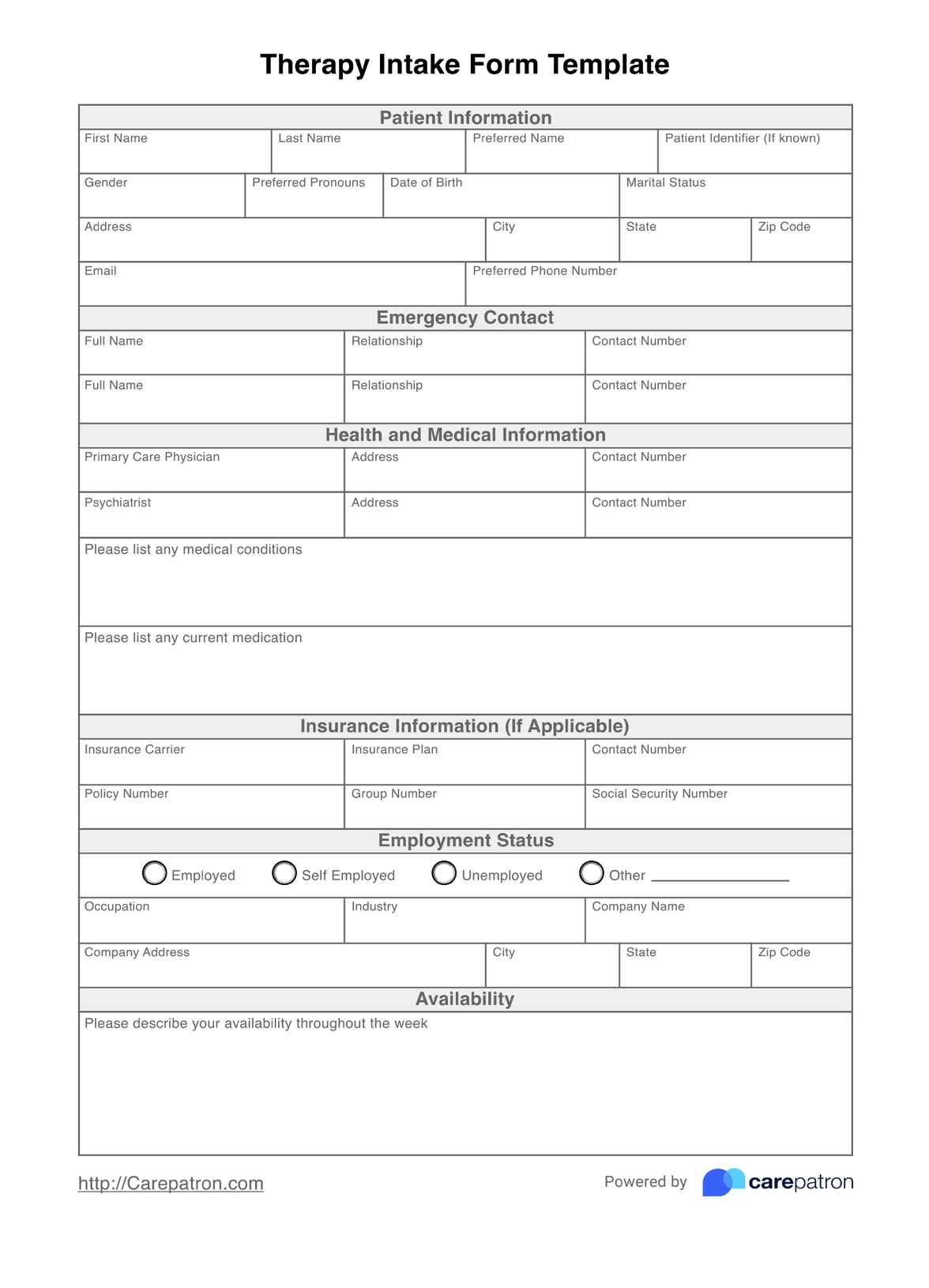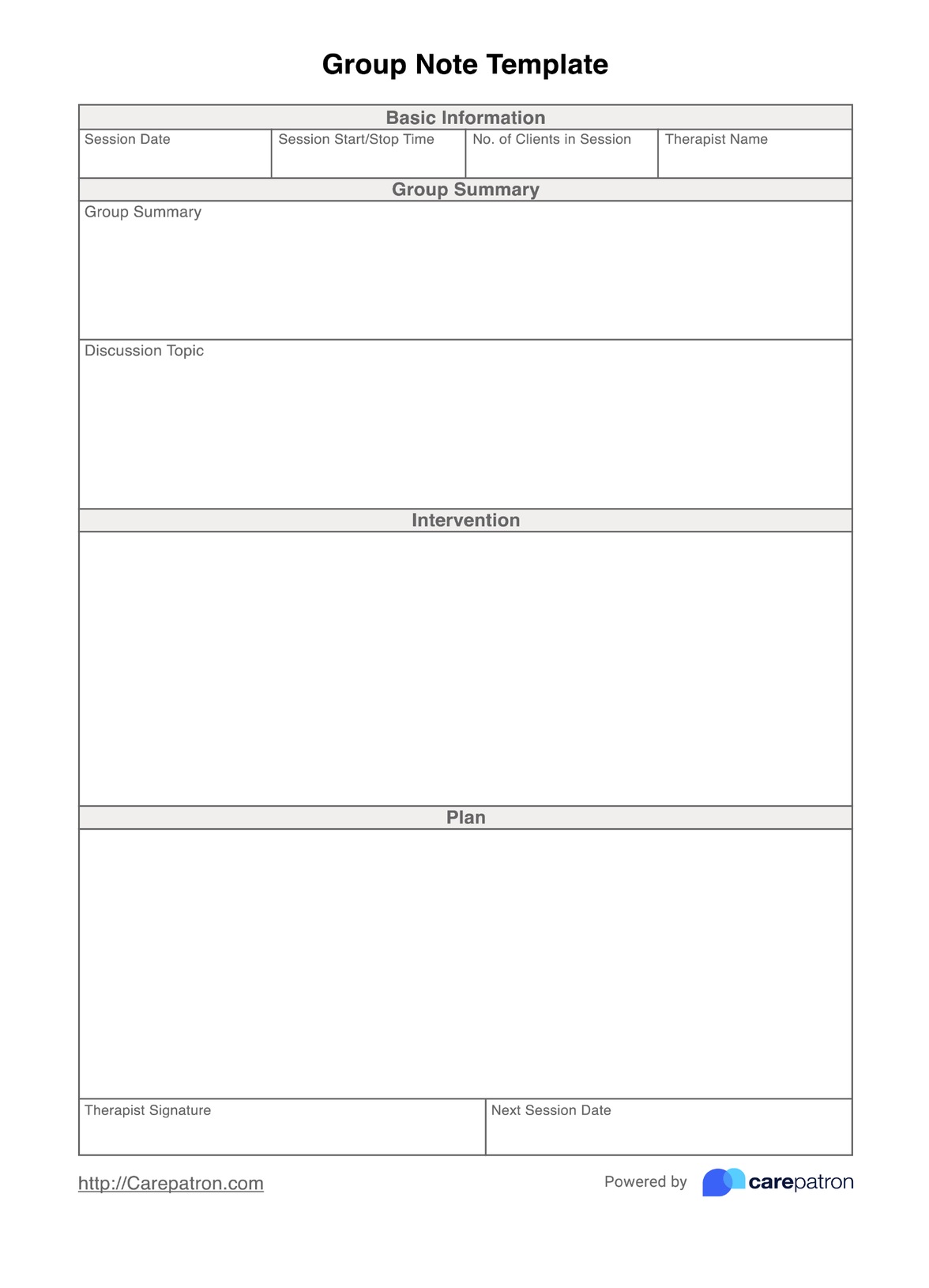Creating a Better Day DBT Worksheet
Help your client identify activities they can resort to when they’re having a hard time or need to end their day positively with the Creating a Better Day DBT Worksheet.


What is Dialectical Behavior Therapy?
An evidence-based type of psychotherapy, dialectical behavior therapy or , was developed by Marsha M. Linehan, a psychologist, in the 1980s. Originally used to treat clients with bipolar disorder, because of evolution and adaptation over the years, dialectical behavior therapy can and is being used to treat clients with other mental health conditions. These mental health conditions include substance abuse, eating disorders, anxiety, and depression.
Though dialectical behavior therapy has roots in cognitive-behavioral therapy, what makes it different from CBT and others is the addition of mindfulness practices and Eastern philosophical concepts. Using the combination of the mentioned three, the DBT approach focuses on acceptance and change wherein the client learns how to accept their emotions and desires while working on making better and positive changes in their life.
Using DBT, a practitioner aims to help their client develop four major skills. They are:
- Mindfulness is where the client is more aware and better accepts present thoughts and feelings.
- Distress Tolerance is where the client becomes capable of getting through challenging times without resorting to self-destructive coping techniques
- Interpersonal Effectiveness is where the client knows and is firm about what they’re feeling and what they want to improve their relationship with themselves and others
- Emotional Regulation is where the client can deal with their primary or first reaction before they turn into secondary or other emotions that may follow.
Dialectical Behavior Therapy or DBT sessions are usually conducted by therapists with a DBT certification, psychiatrist, psychologist, or psychiatric nurse. The sessions they choose to conduct with the patient may be one or all of the three: individual sessions, group therapy sessions, and telephone crisis/phone coaching.
Creating a Better Day DBT Worksheet Template
Creating a Better Day DBT Worksheet Example
How to use the Creating a Better Day DBT Worksheet:
Access and Download the Template
Access and download a digital and printable version of the Creating a Better Day DBT Worksheet by doing either of the following:
- Clicking the “Use Template” or “Download Template” button
- Searching “Creating a Better Day DBT Worksheet” in the search bar on Carepatron’s template library on the app or website
Explain the Template
Even if there are instructions on the template, you may explain and review the different sections so they can better understand how to fill out the worksheet.
Fill the Template
When the client is ready to answer the worksheet, you may provide them with a copy. Suppose the worksheet helps and sparks their memories of their interests. Then, you may converse with them and ask them questions regarding their current and past hobbies or pleasurable activities they did or participated in. To add, you may also help them brainstorm on the schedule.
Discuss with the Client
Once the client is finished, you may use this time to talk to the client about their answers if they are comfortable doing so. During this time, you may also provide them instructions on using the worksheet to their advantage beyond the four walls of your clinic or office.
Securely Store
To protect their privacy, remind your client to store the physical copy in a secure location or the digital copy on Carepatron, where only they and you, the referring physician, can access the worksheet when needed.
When would you use this Creating a Better Day DBT Worksheet?
Psychiatrists, psychiatric nurses, psychologists, social workers, family therapists, or therapists with a DBT certification may use the DBT Worksheet when they want the client to hone their distress tolerance skills.
We’ll leave it up to the practitioner’s expertise to decide when they’ll ask the client to do the exercise and provide a copy of the worksheet to be answered. This is because the practitioner knows the client best and can tell when the client is going through challenging times and needs to rely on healthy coping mechanisms to deal with their problems. To add, the practitioners will also most likely know not only if the patient is capable of independently choosing to do the activities they’ve written down or if the exercise has the potential to be effective.
What are the benefits of using this Creating a Better Day DBT Worksheet?
Know More about the Client
Filing out the Creating a Better Day DBT Worksheet with your client will help you understand and know more about your patient’s condition, likes/dislikes, hobbies, limitations, and support system. By knowing one or all of these, you can connect with your client better and formulate additional treatment exercises or plans your client can do alongside the Creating a Better Day exercise.
Structure and Guidance
The Creating a Better Day DBT Worksheet can be used as a reference to provide structure in the client’s day and better structure how the referring physician will help the patient hone the distress tolerance skill. To add, the client will also be able to save a lot of time and effort that would’ve gone to coming up with pleasurable activities they must do daily.
Positive Habit Forming
If used multiple times, the worksheet can help the patient not only learn the skill of distress tolerance but also form the habit of doing these pleasurable activities for their mental, emotional, and possibly physical health.
Entirely Digital and Easily Accessible
The Creating a Better Day DBT Worksheet isn’t only free, but it’s also downloadable as a printable and digital file. If you and your client agree to keep and complete it as a digital file, they can easily access it on any gadget when they need a reminder of the planned schedule of their pleasurable activity.
Commonly asked questions
It usually takes around an hour to accomplish the Creating a Better Day DBT Worksheet.
The practitioner can provide this guide to help clients hone their distress tolerance skills. Meanwhile, the client can use this as a guide that can provide a structure within their day and remind themselves of the pleasurable activities they can do to cope with tough times within their day.
It’s best used when a patient is having a bad day or is going through challenging times and need to find healthier coping mechanisms.


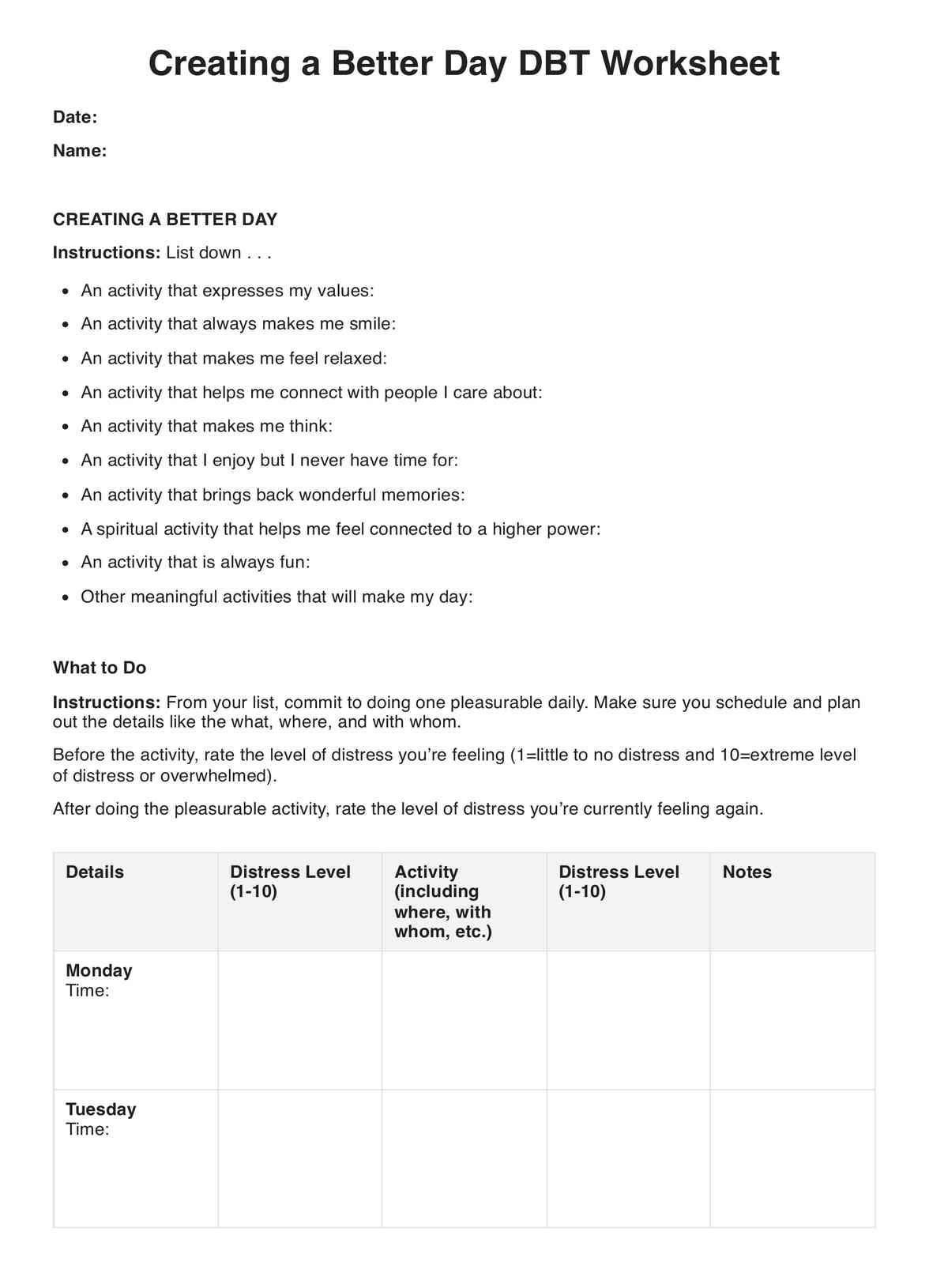
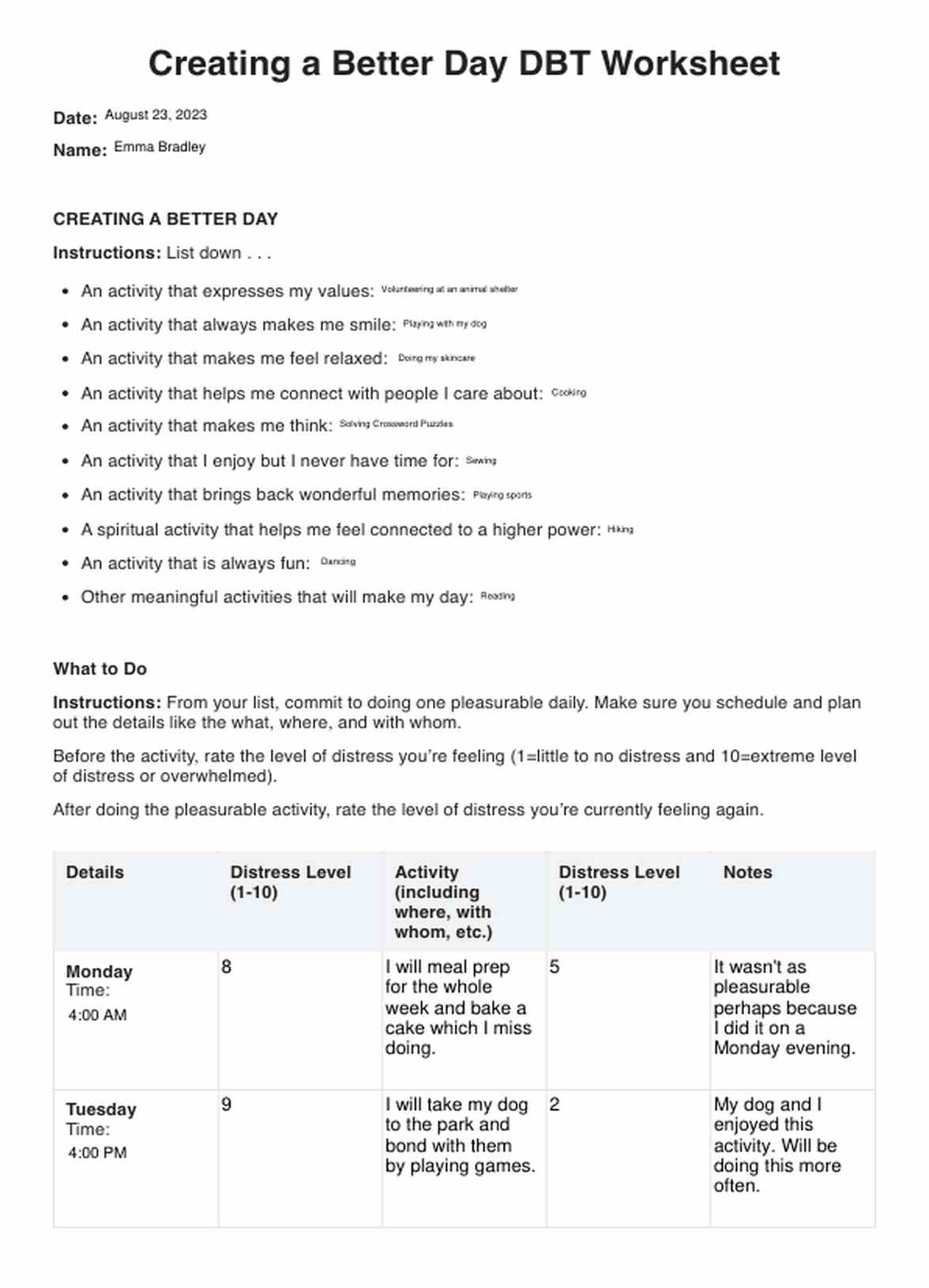















-template.jpg)





















































































